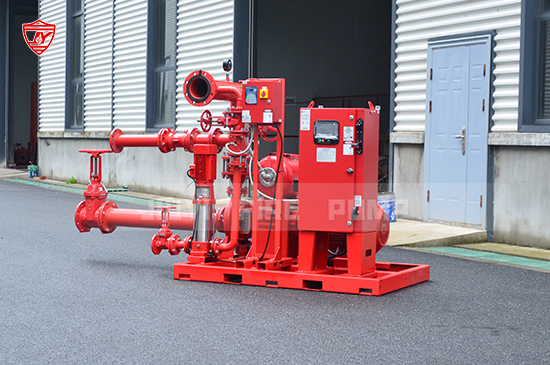Fire protection systems are designed to save lives and property, but without reliable water pressure, even the most advanced sprinkler or standpipe systems would fail. This is where the fire pump comes in.
A fire pump is a critical component of a building's fire protection system. It is designed to boost water pressure to ensure an adequate and steady supply of water reaches the fire suppression systems—such as sprinklers, hose reels, and standpipes—during a fire emergency.
Fire pumps are usually connected to a public water supply or a dedicated water source, like a water tank, reservoir, or even open water sources in rural applications. They are typically activated automatically when system pressure drops below a threshold—usually due to an open sprinkler head—or can be manually started.

The main function of a fire pump is to increase water pressure. Fire protection systems often require higher pressure than a normal building water supply can provide. This is especially true in:
High-rise buildings
Warehouses with extensive pipe networks
Facilities with foam or deluge systems
Industrial plants with elevated fire risks
By maintaining optimal water pressure, the fire pump ensures the effectiveness of sprinklers and hydrants to suppress fires quickly and efficiently.
When a fire sprinkler head opens due to heat detection or when someone opens a fire hose valve, there’s a sudden drop in system pressure. This triggers the fire pump controller to start the pump. Once running, the pump draws water from a water supply and pushes it into the fire protection piping network, ensuring all endpoints receive sufficient flow and pressure.
Most fire pump systems include the following components:
Pump (Electric or Diesel-driven)
Pump controller
Pressure relief valve
Jockey pump (maintains pressure during normal conditions)
Test header
Flow meter
Different types of fire pumps are used depending on system requirements and water sources. Here are the main types:
The most common type, using impellers to move water efficiently.
Used when water is sourced from below ground, such as wells or tanks. NFPA 20 mandates this type when water level is below the pump.
Compact and economical, suitable for small to medium-sized buildings.
Known for reliability and ease of maintenance; often used in large facilities.
Ideal for systems needing very high pressure, often found in high-rises or large industrial plants.
Fire pumps are driven by either electric motors or diesel engines. Each has its own benefits:
Quieter operation
Lower maintenance
Requires a reliable power supply
Independent from building power
Ideal for areas prone to blackouts
Requires fuel storage and regular engine maintenance
Some systems use both types in redundant configurations for extra reliability.
Without a fire pump, the pressure available in the system may not be sufficient to:
Activate sprinkler heads effectively
Reach upper floors in high-rise buildings
Deliver water through long pipe networks
Support hose stream demands during large fires
This can severely compromise the fire protection system’s performance, leading to greater damage and risk of injury.
Fire pumps must be installed and maintained according to international standards, most notably: